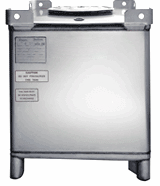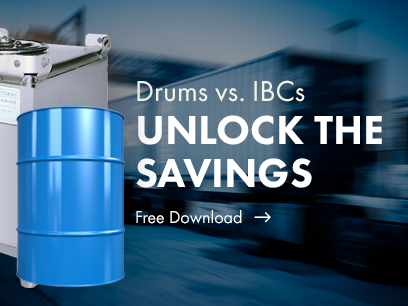The list below is provided as a general guideline for the qualification and maintenance of stainless steel totes and other IBCs and is not intended as a recommendation for service. We urge you to consult the Department of Transportation for exact information pertaining to your intermediate bulk containers.
General. Each metal IBC constructed in accordance with a UN standard for which a test or inspection is specified in paragraphs (1), (2) and (3) of this section is required may not be filled and offered for transportation or transported until the test or inspection has been successfully completed. This paragraph does not apply to any IBC filled prior to the test or inspection due date. This paragraph does not apply to DOT 56 and 57 portable tanks.
Test and inspections for stainless steel totes, as well as metal, rigid plastic and composite IBCs. Each IBC is subject to the following test and inspections:
 Each IBC intended to contain solids that are loaded or discharged under pressure or intended to contain liquids must be tested in accordance with the leakproofness test every 2.5 years, starting from the date of manufacture or the date of a repair.
Each IBC intended to contain solids that are loaded or discharged under pressure or intended to contain liquids must be tested in accordance with the leakproofness test every 2.5 years, starting from the date of manufacture or the date of a repair.- An external visual inspection must be conducted initially after production and every 2.5 years starting from the date of manufacture or the date of a repair to ensure that:
a. The IBC is marked in accordance with DOT requirements. Missing or damaged markings, or markings difficult to read must be restored or returned to original condition.
b. Service equipment is fully functional and free from damage which may cause failure. Missing, broken, or damaged parts must be repaired or replaced.
c. The IBC is capable of withstanding the applicable design qualification tests. The IBC must be externally inspected for cracks, warpage, corrosion or any other damage which might render the IBC unsafe for transportation. An IBC found with such defects must be removed from service or repaired in accordance with DOT requirements. For metal IBCs with thermal insulation, the insulation must be removed to extent necessary for proper examination of the IBC body. - Each metal, rigid plastic and composite IBC must be internally inspected at least every five years to ensure that the IBC is free from damage and to ensure that the IBC is capable of withstanding the applicable design qualifications test.
a. The IBC must be internally inspected for cracks, warpage, and corrosion or any other defect that might render the IBC unsafe for transportation. An IBC found with such defects must be removed from hazardous materials service until restored to the original design type of the IBC.
b. Metal IBCs and stainless steel totes must be inspected to ensure the minimum wall thickness requirements are met. Metal IBCs not conforming to minimum wall thickness requirements must be removed from hazardous materials service. - Retest date. The date of most recent periodic retest must be marked on the DOT/UN tag.
- Record retention. The IBC tote tank owner or lessee shall keep records of periodic retests and initial and periodic inspections. Records must include design types and packaging specifications, test and inspection dates, names and address of tests and inspection facilities, names or name of any persons conducting tests or inspections, and a test or inspection specifics and results. Records must be kept for each packaging at each location where periodic tests are conducted, until such tests are successfully performed again or for at least 2.5 years from the date of the last test. These records must be made available for inspection by a representative of the Department on request.
Invest in the right IBCs for your business: contact Metano today for stainless steel totes and other IBC tanks.




